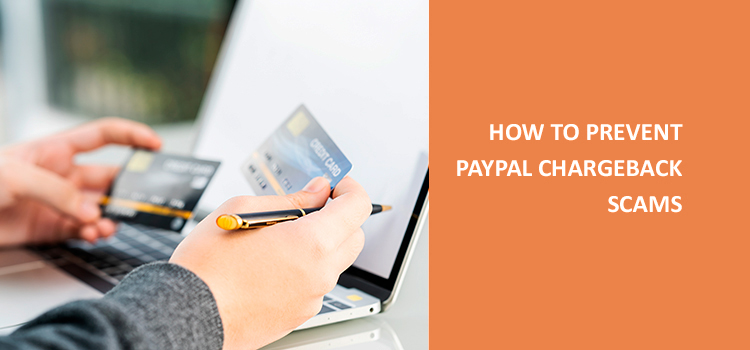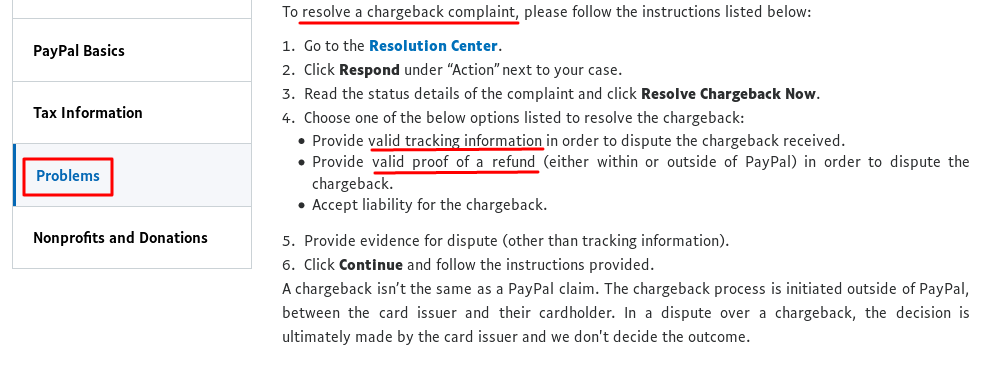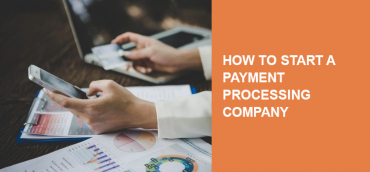Plenty of merchants pick Paypal as a payment method thanks to its convenience. Statista confirms this and shows that there were 305 million registered Paypal accounts in Q4 2019. Moreover, the accounts’ quantity shows a growing trend. Every year users open more and more of them.
Despite Paypal’s popularity, there are some drawbacks we cannot pass. And their name is chargebacks. A merchants’ nightmare, chargebacks influence their credibility and income.
In this article, we are going to take a look at three main Paypal scams. On top of that, we’ll talk about other scam types. And, of course, tell you how to prevent Paypal chargeback scams.
Table of Content
What are the types of Paypal fraud?
Product not received
It’s exactly what it sounds like. Fraudsters perform this scam with the help of the fake shipping address. Just imagine, the user states the shipping address that doesn’t exist. After the delivery fails multiple times, the shipping company flags the parcel as “undeliverable.”
The next step for fraudsters is to contact the shipping company and state the new shipping address. This time the valid one. After doing this, they receive the order. Nevertheless, fraudsters contact the Paypal to claim they have never received the parcel.

Of course, the merchant and Paypal will see the old invalid address. Moreover, the merchant won’t have proof of delivery. That means the scammers are going to receive the reimbursement. What’s even worse, Paypal’s Seller Protection program doesn’t save merchants from fake shipment addresses. As a matter of fact, the seller loses both the product and money.
Product not as described
There are dishonest merchants. But we are sure your motto is a “fair play.” So, it’s disappointing when this scam type hurts you. The scheme is as follows. The user orders the product(s). Then s/he claims it’s completely different from the description. In the end, you face a chargeback dispute without doing anything wrong.
You might also like: Chargeback rights and why you need to know them
Unauthorized transaction
There are two scenarios in this case. Firstly, the real account holder can claim s/he has never made the purchase. Another example is when cyber crooks have hacked the account. Accordingly, the merchant receives an order and an address to ship the product(s).
Then, the real account owner contacts Paypal to state the account has been hacked. That means a chargeback dispute for the merchant. Nonetheless, if the seller can prove the account hacking, Paypal may reimburse the loss.
What are other Paypal scams possibilities?
Excess amount
That’s how the fraudster can gain from the overpayment. Firstly, the scammer makes the payment that exceeds the original product’s amount. Then, the “customer” asks the merchant to pay the exceeding amount of money back. So far, everything seems to be normal.
Yet, on the next step, the scammer claims somebody has hacked the account. That to say, s/he has never intended to make the purchase. Paypal contacts the merchant asking for a chargeback.
Once again, there can be two scenarios. On the one hand, for sellers, it’s an overpayment amount loss. On the other hand, the seller can lose both the excessive amount and the product should he send one.
Paypal email scam
Fake email. Scammers create an email address that the seller can easily confuse with Paypal’s original one. In the email, the scammer states the client has made the payment. But there’s one particularity. “Paypal” will hold the funds until the merchant sends the tracking number for the shipment.
In this case, the scammers hope the merchants will rashly send the tracking number to get the payment. If the seller decides to do this, the fraudsters get access to tracking and the end shipping point. In the end, they get the order without spending a penny on it. The seller, of course, never receives the payment.
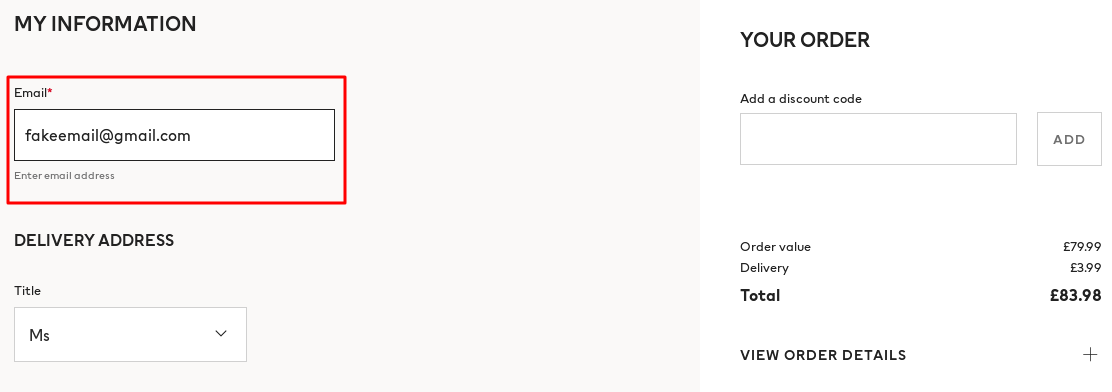
Phishing email. In this case, the scammer sends a letter with the request to confirm the invoice. Commonly the letter will include the link or a button to the copycat Paypal website. When the seller presses it, s/he has to enter the credentials on the third-party website.
After this, the scammer accesses the merchant’s login data. Are you wondering how do you get scammed? Well, the fraudsters will use your real credentials to enter the legitimate account. Then they are free to withdraw funds from your account. Another option is to make payments for various goods and services.
How to prevent Paypal fraud?
Let’s describe the prevention of the various Paypal scam types.
How to avoid “no item” disputes
As we’ve stated before, this fraud type is closely connected with shipping. That’s why we’ll share some scam detection and prevention techniques you can use. First of all, make sure to have a Shipping & Delivery page with clear terms. Provide a list of locations you ship to. Be transparent with the shipping period. Do not try to downgrade the real delivery time.
Ensure you are using online tracking for all deliveries. In the case of standard delivery, the merchant sees the product is consigned. With online tracking, it’s possible to screen the order on every stage up to the final delivery point.
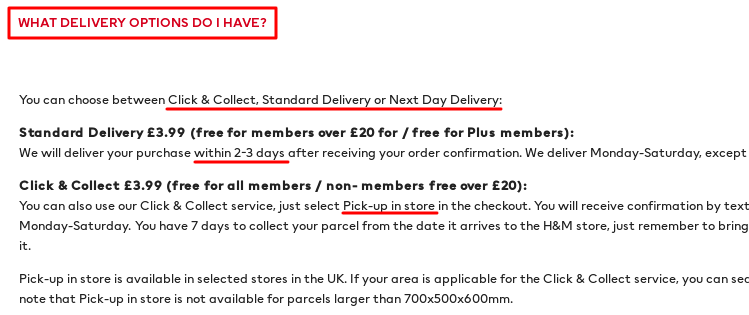
If you sell high-ticket items, for instance, $700+, claim the customer’s signature upon arrival. That eliminates possible concurrent issues. Confirmation via the signature ensures there’s a real person behind the order.
Another way to avoid a scam is to insure the shipment. Not only it’ll work for fragile items but also damaged/lost parcels. Moreover, this option can be the key to fraud decreasing. Delivery insurance includes tracking and shipping information. That leaves no space for a scam.
Users who claim overnight shipping for high-ticket items should act as a warning sign for you. There were fraud cases on Amazon and eBay when scammers have used manipulations with addresses and fastened shipping. So, try to ship normally. Make the shipment period up to 48 hours to avoid fraud.
Also, don’t forget to report if there’s any delivery delay. Whatever the reason – weather conditions, technical difficulties, etc., notify your clients in advance.
How to avoid “not as described” disputes?
To cross this point out of the scam list, merchants have to make some actions. So, they need to offer precise products’ descriptions. It should include all the possible imperfections or defects. Also, it’s vital to provide pictures from several angles. And if the CMS allows uploading products’ video, that is even a better option.
When the customers contact you with the products’ quality questions, make sure to reply politely. The answer should also be prompt. Try to solve the problem without taking it to the chargeback dispute level.

How to avoid “unauthorized” disputes
As we’ve mentioned, unauthorized transactions are the result of either purchase from hacked accounts or “friendly fraud.” To minimize unauthorized risks, merchants should pay attention to some triggers. Check them in the following list.
- A new user makes an order for an amount exceeding the average ticket amount across the website. It’s also an alert if this is a high-demand product purchase.
- A customer states a shipping address from the high-risk zone. They are most likely to be fertile ground for fraud.
- A client asks for the delivery address change after s/he has paid for the order. Remember that such cases require investigation.
- A shopper orders the product(s) at an unusual time. For instance, you sell in West Europe, and the customer makes 20 orders at 4.00 am. That’s an activity to flag ‘suspicious.’
- Different customers make various products to one shipping address. You can report it as a fraud. Cyber crooks pay with stolen credit cards and then use one delivery address to receive goods.
- A customer overpays. We’ve talked about this scam type. It might be a simple shopper’s mistake. Yet, make sure to pay attention to this case.
- A user multiple orders the same item of the same conditions/sizes (e.g., 60 M-sized coats). If you are asking yourself, “How do Paypal scams work?” it’s the case.

- A client requests overnight delivery. If the shopper asks to ship a high-ticket item fastly, make sure to investigate the case more closely.
- A shopper checks out with an email that contains a random string of letters (e.g., [email protected]). Trustworthy clients are likely to use an exact name.
- A client states a suspicious address. As you ship pricey items, take time to check the address validity.
All-in-all, make sure to work the extra mile if you identify any sign of suspicious activity. Being consistent with tracking your customers’ journey and their typical shopping behavior helps you prevent fraud in the early stages.
So, is Paypal safe?
After all the scam cases we’ve described, you may wonder if Paypal is safe. Well, it answers all the industry’s security standards. Often, merchants should take care of safety on their own. For instance, merchants can easily avoid a data breach. It’s a case of phishing emails.
- Firstly, make sure to read the email address carefully. Don’t let an address as, let’s say, [email protected] confuse you. Look, there are two “l” instead of one in the word “Paypal.”
- You’ve missed it and opened an email. You’ll see the information that looks pretty official. Then, there, most possibly, will be a link or a button. Spoiler alert – don’t press it!
- But what does happen if you’ve pressed it? Nothing bad for now. Check the URL of the website. The fraudster will make it look like Paypal’s one (e.g., https://paijpal.com/login).
- If you’ve missed all those triggers and type your real Paypal data on the copycat website, you are going to have some troubles.

As you can see, it’s nothing to do with Paypal security. It’s more about your attentiveness, as an account holder. As the shopper needs to type his/her email address during Paypal payment, there’s no verification code to help you. That’s why it’s crucial to be meticulous with a variety of data.
Conclusions
In this article, we aimed to investigate the most widespread Paypal chargeback scams. Based on them, we managed to offer prevention means to safeguard yourself from fraud. Let’s confirm what we learned.
So, can Paypal be hacked? Yes. But only if you enter your account credentials on the unverified websites. Can you receive chargeback disputes? Yes. But if you work with your clients inattentively. There are lots of things you, as a merchant, need to keep in mind. Accordingly, never underestimate the power of tracking and real-time analytics.
What’s a Paypal security, and is it enough to save you from a scam? Admittedly, it’s a complex notion, containing PCI DSS compliance & fraud prevention software. There’s a Paypal fraud department number ((402) 935-7733) you can always use. Yet, Paypal reported a variety of data breaches through years. And that is disturbing.
There’s a way out, though. You can accept payments with a payment service provider. It will offer Paypal among other payment methods. What you get is additional protection from the payment processor’s side. It usually includes PCI DSS compliance, fraud & chargeback prevention tools, real-time monitoring, and 3D Secure.
